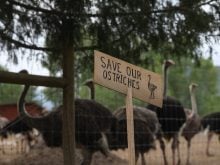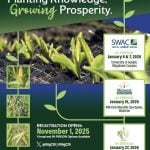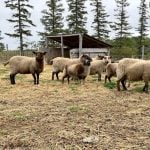A marriage between air seeding and herbicide-tolerant corn could provide more farmers with a chance to grow corn without investing in equipment to plant it as a row crop.
The Prairie Agricultural Machinery Institute at Portage la Prairie, Man., is in its second year of research trials to learn whether solid seeding can give growers at least as much corn production as the more conventional row cropping.
The research is based on using an air seeder from Bourgault and Roundup Ready silage corn developed by Monsanto. In the solid seeded corn, weed control is done with a post-emergent application of herbicide when the crop is about 25 centimetres tall.
Read Also

Farmland ownership fires up Saskatchewan politicians
Saskatchewan politicians debate the enforcement of farmland ownership laws in the province.
The results from last year’s trials were encouraging but no final conclusions have been drawn. This year, the research is working with different seeding rates to learn which might give the best production, said Harvey Chorney, vice-president of PAMI’s Manitoba operations.
“The idea is that guys with air seeders won’t have to buy specialized equipment,” said Chorney, noting that growers are keen to see the final outcome of the research.
For comparison in this year’s research trials, corn was both solid seeded and planted in rows at a rate of 28,000 seeds per acre. Plots of solid seeded corn were also planted at rates of 30,000 and 32,000 seeds per acre.
Previous research done in Manitoba suggested there is potential for corn growers in Manitoba to increase their seeding densities for higher yields, which is why the higher planting densities were included by PAMI this year. Livestock producers in the province are increasingly interested in growing silage corn because of its forage potential.
“It’s a great silage alternative,” Chorney said. “The tonnage from corn can really leverage a guy’s acreage in terms of feeding cows.”
The corn in this year’s trials has not yet been harvested for an analysis of its yields. The silage corn that was solid seeded last year fed well through the forage chopper when harvested, said Chorney.
Corn grown in Manitoba is more typically planted at a rate of 26,000 seeds per acre on 30-inch row spacings. Loraine Bailey, research co-ordinator for the Manitoba Corn Growers Association, said previous research has shown growers could see benefits from planting in densities as high as 36,000 seeds per acre, although that is not recommended without growers first trying it on a smaller scale.
Corn planted in higher densities tends to grow taller and yield more plant material, said Bailey. It also results in stalks that are softer and more pliable, which can increase the risk of them breaking in a standing crop but also makes the feed more appetizing for livestock.
Finding ways to increase the amount of plant material yielded by a corn crop could also fit the growing interest in ethanol production. The use of plant biomass in ethanol production is an alternative to using the grain from crops like corn and wheat.
“It gives growers another limb on which they could go out and investigate,” Bailey said.














